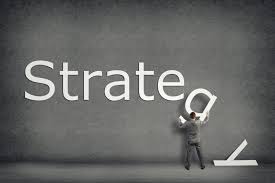Modern marketers need to be agile as a rule, able to adjust and to tweak plans as necessary to optimize the performance of everything. However, it’s critical to remain agile, but not to fall into the trap of being too reactive to the wrong things. This means adhering to a clearly defined Demand Generation Strategy that is buyer-centric and all the things we need it to be to obtain our goals, and then sticking to it. This means maintaining focus and not being drawn into opportunities (events, webinars, co-sponsoring content) that do not further defined objectives.
 It’s very hard to resist the possibility of speaking or exhibiting at a new event that just popped for a reduced rate, but is it really the best channel to connect with your buyers? Do you know your buyers will attend? Do you have an opportunity to shape the content? If you aren’t sure, pass and stay focused on your existing plan as it is just a distraction from your strategy.
It’s very hard to resist the possibility of speaking or exhibiting at a new event that just popped for a reduced rate, but is it really the best channel to connect with your buyers? Do you know your buyers will attend? Do you have an opportunity to shape the content? If you aren’t sure, pass and stay focused on your existing plan as it is just a distraction from your strategy.
It’s important to follow the agreed to plan, however, according to the most recent CMI and MarketingProfs 2016 Benchmarks, Budgets and Trends Report only 32% of marketers have a documented Content Marketing Strategy. To make things even more challenging, the soon-to-be-released ANNUITAS 2015 B2B Demand Generation Study reports again this year that the majority of marketers run more than 15 campaigns a year! That is more than one a month. Numbers like this indicate that marketers are far too-tactical to begin with, running one-off campaigns instead of perpetual programs that truly drive demand. Adding more content or tactics that weren’t planned into the mix isn’t necessarily going to drive more revenue.
In fact, unplanned or unnecessary activity can negatively impact your bottom line if you exceed your marketing budget without generating the required results. Not to mention, if the content or unplanned tactic isn’t relevant to your buyer…you run the risk of losing them.
I write this as every day I get calls about joining this or that event, sponsoring a webinar or co-authoring content. Although more exposure or more of anything is usually better, in the case of demand generation, more isn’t always better. Focus on what you have documented, the strategy needed to accomplish revenue goals, demand generation or content marketing objectives and tweak or adjust as necessary to optimize it. Don’t fall into the trap of always going for more…it’s not always better. A reactive Demand Generation Strategy – isn’t a strategy at all.
This article was syndicated from Business 2 Community: The Reactive Demand Generation Strategy
More Sales & Marketing articles from Business 2 Community:




